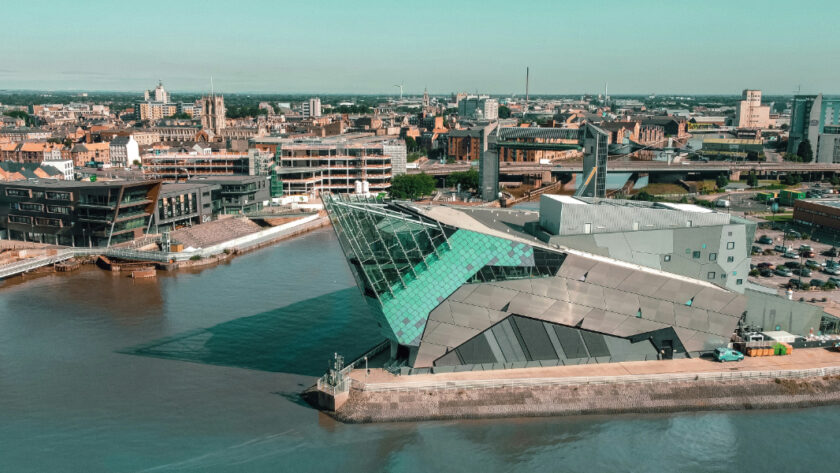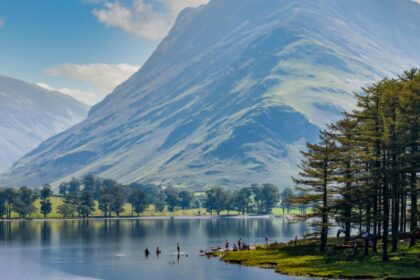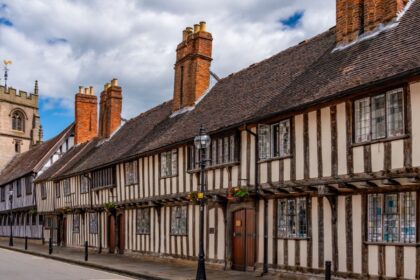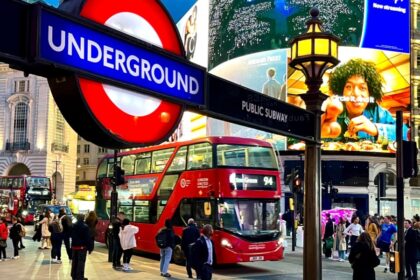Hull is the sort of place that gets described with a smirk or a shrug. People think they know it, or think they don’t want to. It’s been on the receiving end of lazy jokes and end-of-the-line metaphors for too long. But hang about a bit and Hull will gently prove you wrong.
Sitting quietly on the Humber estuary in East Yorkshire, Hull (officially Kingston upon Hull, but nobody calls it that) is a city with the soul of a seafaring poet and the skin of a dockworker. It’s rough around the edges in places but surprisingly refined in others. It doesn’t grab the headlines like York or Leeds, but that’s exactly why it’s worth your time.
Hull, a history shaped by ships and trade
Hull’s story begins not with grand castles or royal edicts, but with a muddy little inlet on the River Hull where merchants once unloaded barrels of salt and wool. The town grew quietly but quickly in the 12th and 13th centuries, its location near the confluence of two rivers giving it a strategic edge for trade.
In 1299, King Edward I decided to get involved and gave it a royal charter, renaming it Kingston upon Hull. The name stuck, but the locals mostly ignored the Kingston bit and carried on doing what they’d always done – loading, unloading, mending ships and selling fish.
By the late medieval period, Hull was a proper port city with high walls, stone gateways and its own fleet. It even had a brush with royal drama when it refused entry to King Charles I in 1642. This act of defiance is widely considered the first spark of the English Civil War. Not bad for a dockside town with a stubborn streak.
Fast forward to the 18th and 19th centuries, and Hull was booming thanks to fishing, whaling and shipping. It became one of the busiest ports in the country. The Blaydes shipyard was churning out vessels including including the HMS Bounty (originally named Berthia), while the smell of fish and tar lingered in every street. This was also the era of William Wilberforce, Hull’s most famous son, who stood in Parliament and campaigned tirelessly against the transatlantic slave trade.
The 20th century was not kind. Hull was one of the most heavily bombed places in the UK during the Second World War. The Luftwaffe flattened swathes of the city, but Hull kept going. Post-war rebuilding was slow, but it brought new estates, a university, and a sense of resilience that still defines the city today.
Fishing declined in the latter half of the century after the Cod Wars and changing trade laws. Thousands of jobs were lost. For a while, it felt like the tide had gone out for good.
And yet, Hull adapted. Regeneration projects brought new life to the docks and old warehouses. The university became a hub of literature and learning. And in 2017, the City of Culture title gave Hull a chance to show the rest of the country what it had always quietly known – that it was still here, still standing, and still worth a look.
Where the water meets the streets
Hull’s maritime history hits you before you’ve even had a chance to check your phone. The old docklands have been smartened up, but they haven’t lost their character. Head to the Maritime Museum (expected to reopen in 2026 after an extensive refurbishment), housed in a grand old building in Queen Victoria Square, and you’ll get the full story of Hull’s fishing, whaling and merchant past – complete with giant whale skeletons and salty old sea charts.
Nearby, The Deep looms like a glass wedge over the water. It calls itself a submarium, which sounds suspiciously made-up, but it’s an aquarium with attitude. Sharks, rays and sawfish glide through tanks the size of small swimming pools, while kids stick their noses against the glass and try not to blink.
Hull’s old town is just a short walk away and full of handsome brick buildings, cobbled lanes and pubs with names that sound like they should come with a disclaimer. Ye Olde White Harte and Ye Olde Black Boy both date back centuries and are as atmospheric as they come. You half expect a smuggler to stumble in with a lantern and a story.
Poets, pacifists and painters
Hull is not a shouty city but it has produced some quietly brilliant people. The most famous of them is William Wilberforce, the MP who led the campaign to abolish the slave trade. His birthplace is now a museum tucked away in the old town. It’s a sobering and fascinating place that manages to be both low-key and powerful.
Then there’s Philip Larkin, the poet with the world-weary eyes and the fondness for railway stations. He worked as a librarian at the University of Hull, and his influence lingers like pipe smoke in the corners of the Brynmor Jones Library. There’s even a bronze statue of him at Paragon Station, frozen mid-stride with coat flapping behind him, looking like he’s just had a particularly troubling thought about mortality.
Hull’s creative streak is alive and well. Ferens Art Gallery punches above its weight with everything from Dutch masters to modern sculpture, while Humber Street Gallery in the regenerated Fruit Market area is full of contemporary edge. Around the corner, cafés spill onto the pavement and string lights dangle above old warehouses now filled with studios and sourdough.
A city that knows how to reinvent itself
In 2017, Hull was named UK City of Culture. To the surprise of everyone except Hullensians themselves, it was a massive success. The whole place lit up – literally, in the case of the Blade installation in Queen Victoria Square. The year brought street art, theatre, music, poetry, and a slightly smug sense that maybe, just maybe, Hull was getting the recognition it deserved.
But Hull doesn’t shout about it. It just gets on with things. You’ll find friendly locals, often baffled by the idea that anyone might have come to visit on purpose. You’ll find honesty and humour in equal measure. You’ll find a city that has been knocked down more than once and keeps getting back up.
Oddities, alleyways and other reasons to visit
Start with the Museums Quarter, a cluster of free museums near the river. Streetlife Museum has old trams and horse-drawn carriages you can climb aboard, while Wilberforce House (mentioned earlier) and the Hull and East Riding Museum offer everything from Roman mosaics to Iron Age warriors.
For something truly peculiar, look for Land of Green Ginger. It’s one of the world’s best street names and nobody really knows where it came from. The street itself is short and narrow and not particularly green or gingery, but the name alone is worth the detour.
You can walk across the Millennium Bridge to the east side of the city, past moored boats and the smell of river mud. This leads to Victoria Dock and the lesser-trodden corners of the waterfront. Even here, there’s a quiet charm – a sense that Hull hasn’t been completely tidied up for visitors, and that’s part of the appeal.
The food is better than you think
You won’t go hungry in Hull, and you might even be surprised by how well you eat. Trinity Market has had a glow-up and now houses street food stalls, coffee counters and craft beer taps. Try the bao buns, the woodfired pizza or the outrageously good brownies.
If you want something more traditional, Hull is still a stronghold of chip spice, the paprika-like topping that locals sprinkle on everything from chips to chicken. Order a pattie butty and you’ll be given a slab of mashed potato mixed with sage, battered and deep fried, served in a white bread roll. It’s an acquired taste, but you’re here now, so give it a go.
Hull’s greatest trick
Hull’s biggest secret might be this – it’s not trying to impress you. It never really has. And yet it grows on you, quietly and thoroughly. It’s a city of stubborn character, proud without being flashy, thoughtful without being sentimental.
You won’t find many glossy travel guides waxing lyrical about Hull’s curves and corners. But spend a weekend here and you’ll come away with more stories than you bargained for. And probably a chip spice stain on your jumper.
Hull Need to Know
Getting here
Hull is well-connected by train, with regular services from Leeds, York and London (just over 2.5 hours). Drivers can follow the M62 east all the way to the Humber Bridge. Long-distance buses also serve the city.
Where to stay
For a central location, Holiday Inn Hull Marina offers views over the water and easy access to the old town. Hideout Hotel has sleek self-catering apartments tucked down a quiet alley. Budget options include the Ibis and Premier Inn chains dotted around the city.
Where to eat
Thieving Harry’s is a go-to for brunch near the marina. Humber Fish Co serves up excellent seafood. For something casual, head to Trinity Market and graze your way through dumplings, gyros, and brownies. Don’t leave without trying a chip spice-laced snack.
What to do
Visit The Deep, explore the Museums Quarter, and stroll through the Old Town. Take a walk along the Humber foreshore or pop into Ferens Art Gallery. Seek out the Larkin statue at Paragon Station and the quirky names on streets like Land of Green Ginger.
Nearby gems
Beverley is a charming market town just 20 minutes away with a stunning Gothic minster and lively Saturday market. Or cross the Humber Bridge into Lincolnshire and explore the flat, wide landscapes of the south bank.
Best time to visit
Late spring through early autumn is a good bet, when the marina area cafés and bars are open longer hours, and the city’s green spaces are at their best. Look out for festivals like Freedom Festival in early September for art, music and street performance with a Hull twist.





